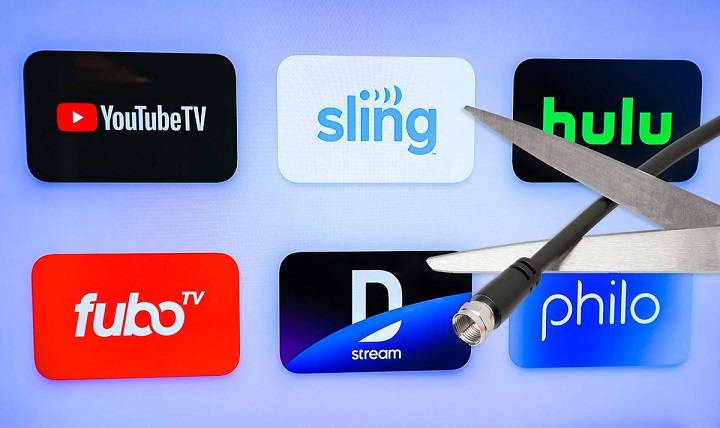Introduction: Understanding Cord Cutting and Its Rise in Popularity
In recent years, cord cutting has emerged as a major trend in the way people consume television and entertainment. But what exactly is cord cutting? Simply put, it means canceling your traditional cable or satellite TV subscription and instead using internet-based streaming services to watch shows, movies, and live TV.
For entrepreneurs, business owners, and marketers, understanding cord cutting is important. It reflects changing consumer behaviors, influences media consumption trends, and opens up new opportunities for advertising and content delivery.
This article explains what cord cutting is, why so many are choosing it, the advantages and challenges it presents, and how you can make the transition smoothly.
What Is Cord Cutting?
Cord cutting is the process of cancelling traditional TV services—like cable or satellite subscriptions—and switching to alternative ways of watching television, usually through streaming platforms over the internet. This can include:
- Subscription-based platforms like Netflix, Hulu, Disney+, and Amazon Prime Video offer extensive libraries of streaming content.
- Live TV streaming through services like YouTube TV, Sling TV, or Hulu + Live TV
- Free ad-supported streaming apps such as Pluto TV, Tubi, or Crackle
The “cord” refers to the cable or satellite connection physically linking your TV to the provider. By cutting this cord, viewers gain more control over what, when, and how they watch content.
Why Are More People Choosing Cord Cutting?
Multiple factors contribute to the increasing popularity of cord cutting:
- Cost Savings: Cable and satellite packages often come with expensive monthly fees, including unwanted channels and hidden costs. Streaming services offer more affordable, customizable options.
- Content Control: Streaming allows viewers to watch specific shows or movies on demand instead of following scheduled programming.
- Multiple Device Access: With streaming, you can watch content on TVs, smartphones, tablets, and computers.
- Flexibility: No long-term contracts or installation hassles—just choose the services you want.
- Improved Technology: Faster internet and smart TVs make streaming smoother and more accessible.
For businesses, this shift means audiences are fragmenting across multiple platforms, making marketing and content delivery strategies more complex but also more targeted.
Advantages of Cord Cutting
- Lower Monthly Bills
Cutting the cord can save consumers hundreds of dollars annually compared to traditional TV subscriptions.
- Customized Viewing Experience
Viewers pick and pay only for what they want to watch, avoiding expensive bundles.
- No Equipment Rentals or Installation Fees
Most streaming requires minimal hardware—often just a smart TV or a streaming device like Roku or Amazon Fire Stick.
- Access to Exclusive Content
Many streaming platforms produce original shows and movies unavailable elsewhere.
- Watch Anytime, Anywhere
Streaming is perfect for on-the-go lifestyles and supports binge-watching.
Challenges and Disadvantages of Cord Cutting
- Internet Dependence: A stable and high-speed connection is crucial for seamless streaming. Poor internet can disrupt streaming.
- Fragmented Content: Some shows or sports are locked behind specific services, meaning multiple subscriptions may be needed.
- Live TV Limitations: Streaming live sports or news may not always match cable’s coverage.
- Data Usage: Streaming can consume significant data, affecting internet plans with limits.
- Learning Curve: Switching from cable to streaming requires some technical know-how.
How to Successfully Transition to Cord Cutting
If you’re considering cutting the cord, here are actionable steps to ensure a smooth switch:
- Evaluate Your Viewing Habits: List your favorite shows, sports, and channels to find streaming services that match your needs.
- Choose the Right Streaming Devices: Smart TVs, Roku, Amazon Fire Stick, or Apple TV are popular options.
- Select Streaming Services: Pick a combination of subscription and free services. Start with a few and expand as needed.
- Test Your Internet Speed: Ensure your internet can handle streaming without buffering (at least 25 Mbps recommended).
- Set Up Your Home Network: Use Wi-Fi extenders or Ethernet connections to improve reliability.
- Cancel Cable Strategically: Don’t cancel cable until you have your streaming setup ready to avoid downtime.
- Use Streaming Aggregators: Apps like Just Watch or Reelgood can help you find where content is streaming.
Cord Cutting and Its Impact on Business and Marketing
The shift toward cord cutting changes how marketers reach consumers:
- Targeted Advertising: Streaming platforms offer precise audience targeting, improving ad relevance and ROI.
- Content Sponsorships: Product placement and brand partnerships within shows are becoming more common.
- Data-Driven Insights: Streaming services collect viewer data to optimize content and ad delivery.
- Challenges for Traditional Advertisers: Reduced cable viewership means companies must adapt to multi-platform campaigns.
Entrepreneurs and marketers who stay informed on cord cutting trends can better align strategies with modern audiences.
FAQ: Cord Cutting Essentials
- Is cord cutting cheaper than cable?
Usually yes, but costs depend on the number of streaming subscriptions you choose. - Can I watch live sports without cable?
Yes, many streaming services offer live sports, but coverage varies. - Is special equipment necessary to cut the cord?
You need a smart TV or a streaming device like Roku or Fire Stick. - Is internet speed important for cord cutting?
Absolutely—faster internet speeds translate to smoother streaming experiences with minimal interruptions. - Can cord cutting affect internet data limits?
Yes, streaming consumes data, so check your internet plan’s limits.
Also Read: Young Celebrity Entrepreneurs to Watch in 2025: The Rising Stars of Business
Also Read: Most Streamed Songs on Spotify in 2025: A Deep Dive into the Year’s Top Tracks
Conclusion: Cord Cutting Is Changing How We Watch TV
Cord cutting has revolutionized entertainment by offering affordable, flexible, and personalized ways to consume content. For entrepreneurs, business owners, and marketers, it signals a shift in consumer habits that demands new strategies for engagement.
By understanding what cord cutting is and how to transition smoothly, you can enjoy the best of modern entertainment while adapting to the evolving media landscape.
















